
Station Name: CONSETT
Notes: In the early 19th century, the area of north-western County Durham where the town of Consett would develop was sparsely inhabited windswept moorland, of little agricultural value. However quantities of iron-ore lay beneath the surface, and a Sunderland mineralogist, William Richardson, recognised the economic potential of these resources. In the1830s and 40s the demand for iron goods was rising, led by the expanding railway system in Britain with its insatiable demand for iron rails. With such a market in mind, Richardson founded the Derwent Iron Company in 1841, close to the recently-opened Stanhope & Tyne mineral railway (which ran from upper Weardale to South Shields). The terraced cottages he provided for his workers formed a community originally known as Berry Edge, which developed into the town of Consett.
Consett station, opened in 1896, was not the first to serve the growing community. In 1834 the Stanhope & Tyne ‘railroad’ had opened to carry limestone and coal. Most of this line was unsuitable for passenger traffic, having numerous extremely steep inclines. However, from the outset local people made informal journeys in the coal wagons, and in 1835 official public trains began to operate between South Shields and Chester-le-Street (Durham Turnpike). When a particularly steep section at Hownes Gill (some two miles south-west of Consett) was replaced with a 150-foot high viaduct, and a deviation line to avoid Nanny Mayor’s incline near Waskerley was built, passenger services began to operate from Crook and Tow Law, past the site of the 1896 Consett station, to terminate at Carr House, where a station opened in 1858.
Consett still did not have a conveniently situated station, or even one bearing its name. However on 1 September 1862 a passenger and goods line from Durham, via Lanchester, opened to a point about a mile west of Carr House, where the first Consett station was built. It was immediately south of the present A692 road to Castleside, at the southern end of the ironworks site and, like Carr House, some distance from the main built-up area of Consett. This terminus was short-lived, as the line was extended northwards up the Derwent valley, via Lintz Green, to Newcastle. Consett station closed to be replaced with Benfieldside, a short distance north, on 2 December 1867. This station was renamed Consett on 1 November 1882, despite being located much closer to Blackhill, a large village which also housed Consett Iron Company workers. On 1 May 1885 it was renamed once more, this time as Consett & Blackhill, before becoming Blackhill on 1 May 1896.
By the 1890s the NER had entered a phase of constructing economical timber buildings at its new stations, but in the case of those between Birtley and Blackhill the risk of mining subsidence also justified the use of lighter structures. At Consett there was one broad island platform on which a long, single-storey timber building with a slate ridged roof accommodated the passenger facilities and offices. There were two small gables midway along the north-west side of the roof. The building was surrounded by a generous flat roofed awning with a deep crenulated valance, in its later years supported at intervals by second-hand rails. A ramp led down to the platform from the road overbridge. A large area of sidings spread to the north-west of the station. Wood was used not only for the station buildings but for the goods shed and stable as well. The stationmaster was denied the dignity of a detached dwelling, as at many stations, but had to be content with accommodation at the end of Sherburn Terrace.
It would appear to have been the most important station on the Birtley-Blackhill route, but Consett booked considerably fewer passengers than some of its neighbours. In 1913 Consett issued 79,041 tickets whilst Annfield Plain and Shield Row (later West Stanley) issued 114,212 and 170,308 respectively. Blackhill station was well situated to serve the steelworks and the north-western area of Consett’s urban sprawl, as well as being a four-way junction; for these reasons it greatly exceeded Consett’s bookings, issuing 145,849 tickets in 1913. The town continued to grow in the 20th century, but the use of its station declined after World War I, principally owing to competition from buses. In 1931 Venture buses operated between Consett and Newcastle (via Rowlands Gill) every twenty minutes, including Sundays, whilst Northern bus 33 provided a half-hourly service via Leadgate and Burnopfield. Further Northern buses (service 11 via Rowlands Gill and 29 via Whickham) also plied between Consett and Newcastle once an hour. This intensive service contrasted with about a dozen trains on weekdays, and two on Sundays. Annual ticket bookings at Consett station in 1930 had slumped to only 14,973, less than a fifth of the volume of 1913. Although Consett station was not directly affected, two of the lines that converged at Blackhill – from Crook and Durham – closed to passengers on 1 May 1939. Passenger numbers at Consett continued to dwindle, and the train service was reduced. The first British Railways timetable (summer 1948) showed only four weekday trains via Annfield Plain to Newcastle (five on Saturdays) and one on Sundays. In the opposite direction there were five weekday trains, with none on Sundays. Public timetables traditionally presented two separate tables, Blackhill – Consett – Newcastle (via Annfield Plain) and Consett – Blackhill – Newcastle (via Lintz Green) and it was unclear how many services travelled over both lines.
The route through Consett was popular with enthusiasts who relished the sight (and sound) of steam locomotives battling against the gradient to haul iron-ore trains up to Consett, usually with the assistance of a banking engine. In the later days of steam, 9F 2-10-0 engines headed and banked the trains, with class 01 2-8-0s and Q7 0-8-0s occasionally deputising on banking duties. From November 1966 diesels took over all operations, but their struggle to reach Consett with their heavy load continued to attract attention. At Consett the steelworks had its own fleet of tank engines until the 1950s, later giving way to Hunslet 0-6-0 diesels; these operated as far as the sidings beside the station.
Sources:
Tickets from Michael Stewart, timetable, last day ticket and poster from John Bainbridge Click here for other views around Consett Click here for freight movements around Consett old13.jpg) The 12.20 Saturday Only service waits at Consett station on 7 May 1955; only two passengers alighted! 67658 is an ex-LNER Gresley V1 2-6-2 tanl. She was built in Doncaster in April 1936 as LNER No 461 and would later be rebuilt from class V1 to V3 in January 1960. Three years latger she was withdrawn from Gateshead shed on 30 September 1963 and cut up at Darlington Works in February 1964. Copyright photo by Jim Sedgwick 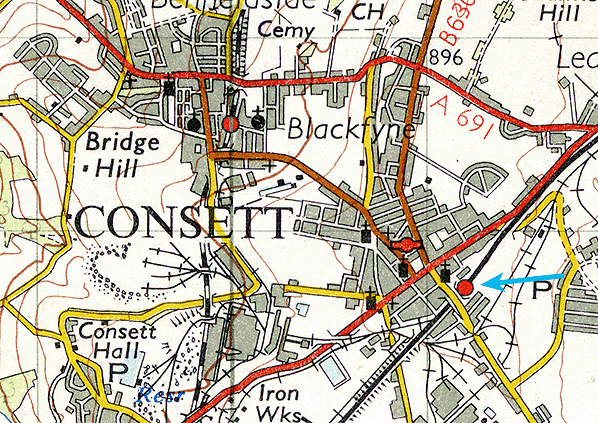 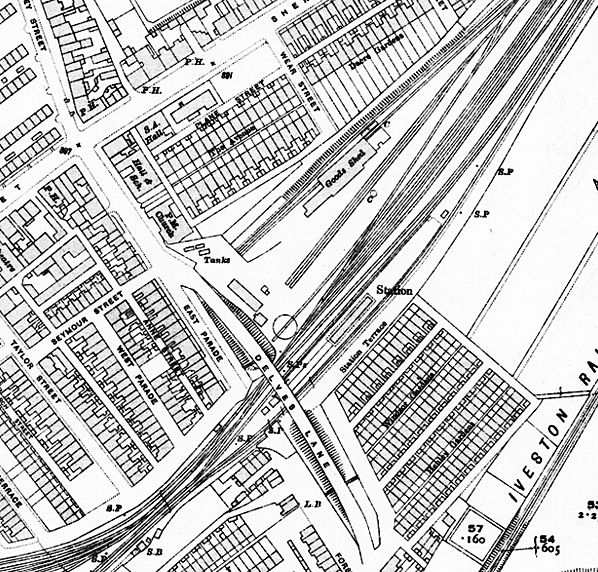 1921 1:2500 OS map 1921 1:2500 OS map 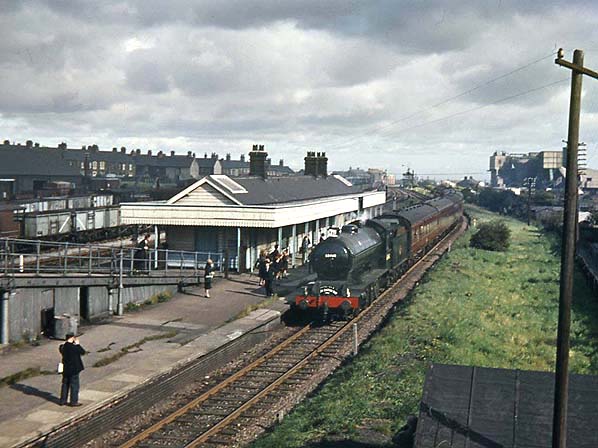 SLS/RCTS 5 day North East Railtour at Consett Station on 28th September 1963 Photo by Brian Johnson 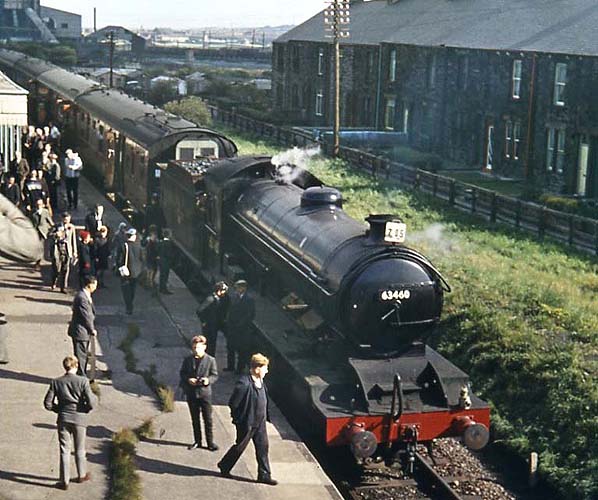
SLS/RCTS 5 day North East Railtour at Consett Station on 28th September 1963
Photo by Brian Johnson old13.jpg) Loaded train passing Consett station in May 1965. Photo by Brian Johnson 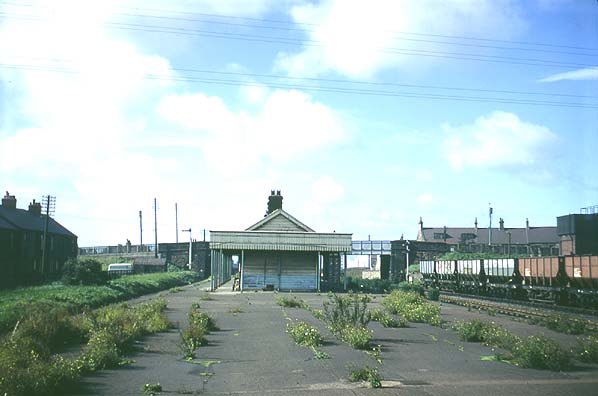
Consett
Station in September 1967
Photo by Nick Catford old12.jpg)
Consett
Station looking north west in 1971
Photo by Peter Howie 35.jpg)
Consett
Station in 1976
Photo by John Cameron 58.jpg) The last train into Consett was organised by the Derwent Rail Action Group running on 17th March 1984 from Newcastle. It stands at the site of the demolished Consett station on 17th March 1984, the station
was to the right of the train. Photo by John Bainbridge 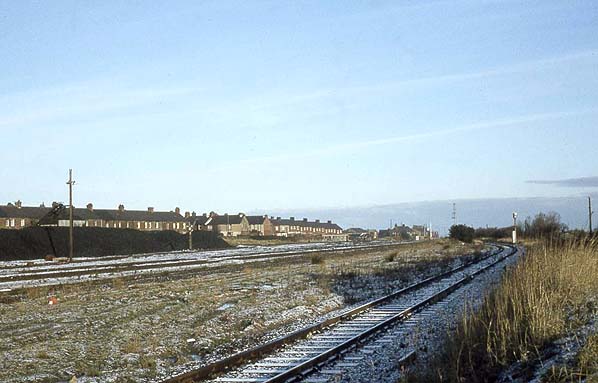 Consett
Station site in March 1984 after closure of the steelworks Photo by Roy Lambeth 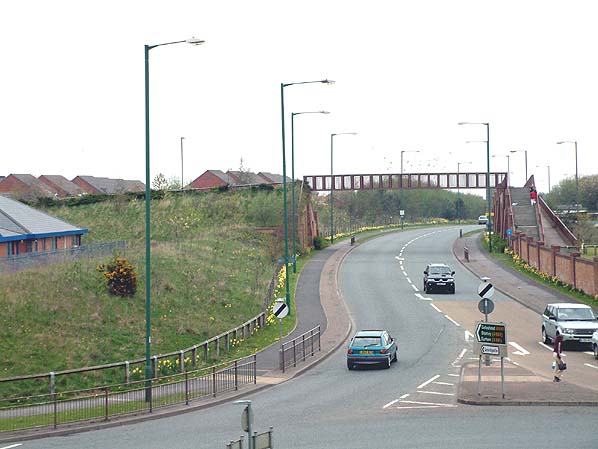
Site
of Consett Station in May 2006. The coal yards was to the
left under new housing Photo by Roy Lambeth  Home Page Home Page
|

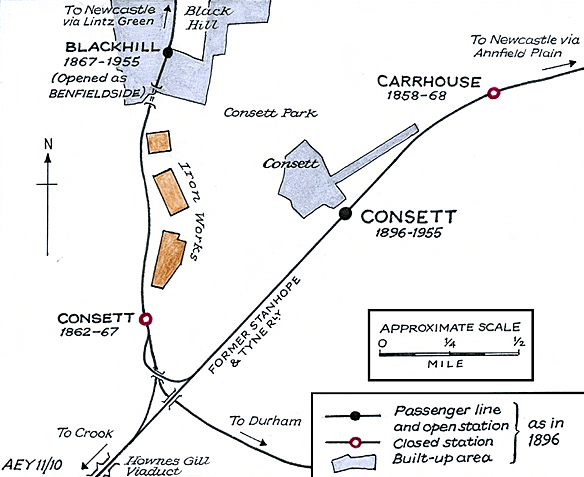


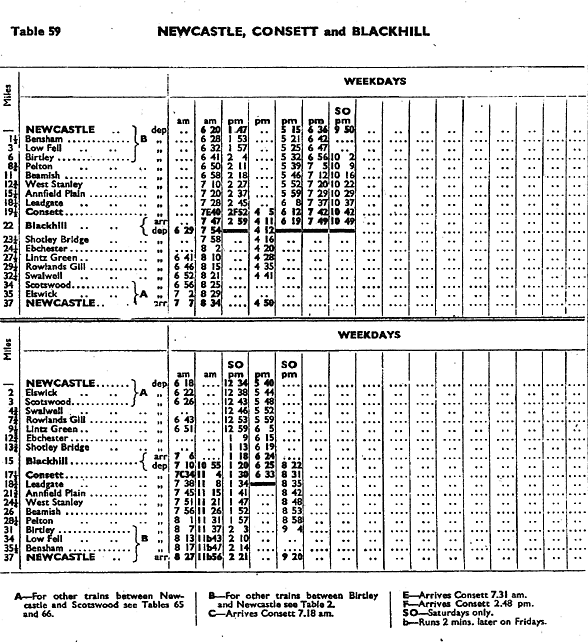

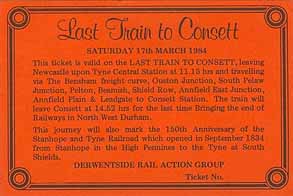
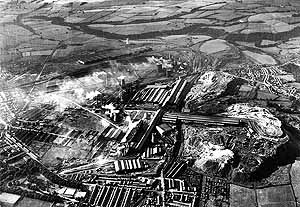 Consett steelworks -
Consett steelworks - 



thumb_old9.jpg)
thumb50.jpg)
thumb51.jpg)
thumb52.jpg)
thumb53.jpg)
thumb54.jpg)
thumb55.jpg)
thumb59.jpg)
thumb60.jpg)
thumb62.jpg)
thumb35.jpg)
thumb36.jpg)
thumb37.jpg)
thumb38.jpg)
thumb39.jpg)
thumb47.jpg)
thumb48.jpg)
thumb56.jpg)
thumb57.jpg)
thumb49.jpg)
